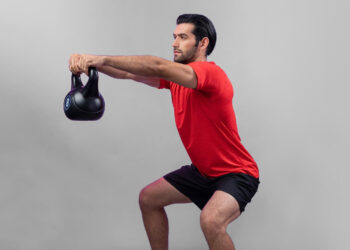The average person weighing 170 pounds burns 324 calories per hour Juggling, the calories burned depends on the your weight, and the intensity of the activity.
When you think of juggling, the first thing that comes to mind might be clowns juggling at a circus. However, juggling is a physical skill that is difficult to perform and burns plenty of calories. Read on to find out exactly how many calories you can expect to burn while juggling.
Juggling is an activity that is done for many different purposes including recreation, entertainment, art, or sport. There are in fact many different forms of juggling with varying degrees of difficulty. You can juggle a soccer ball and other objects that are less common.
Juggling has been documented as being performed by humans for centuries, and the types of juggling have evolved greatly since it was first discovered. Juggling is now a competitive sport that is governed by the World Juggling Federation and there are plenty of world records that have been set by juggling professionals.
Juggling can be done in a variety of different venues in front of crowds for entertainment purposes or in casinos and street performances There is also scientific evidence for the benefits of juggling that make it a fun skill that anyone can learn.
How To Use The Calculator
Using the calculator to determine how many calories you’ll burn while juggling is easy and only requires a few steps. To calculate the number of calories that you’ll burn, just input your weight and the time that you’ve spent or plan to spend juggling. Then select your activity and hit CALCULATE.
Level Up Your Fitness: Join our 💪 strong community in Fitness Volt Newsletter. Get daily inspiration, expert-backed workouts, nutrition tips, the latest in strength sports, and the support you need to reach your goals. Subscribe for free!
Using the calculator step-by-step:
- Choose your unit of measurement (pounds or kilograms)
- Enter your weight in the corresponding unit of measurement
- Find the activity that you’re doing. Juggling only has one type to choose from
- Enter the time (in minutes) you are juggling for
- Hit “CALCULATE”
How the Calculator Works
Our calculator uses MET values to give you an accurate estimate of how many calories you can expect to burn while juggling and doing other activities. The higher the MET value, the more calories you will burn.
MET (Metabolic Equivalent of Task)
MET stands for metabolic equivalent of task, and MET values allow us to give you an estimated expenditure of energy for many different activities, such as juggling.
A MET value is a ratio between the working metabolic rate and the resting metabolic rate [1], which is the rate of energy that is used relative to the duration of time spent doing activities like juggling.
So a MET value of one is the equivalent of the amount of energy you expend while at rest, and a MET value of four means you are expending four times as much energy compared to being at rest.
Almost all activities that you can think of have MET values assigned to them. Some activities with MET values are common, and some are not so common. For example, there are MET values assigned to activities like mowing the lawn, painting, and playing video games.
Most activities come with varying levels of intensity and have different MET values assigned to them. However, juggling only has one MET value assigned to it.
Formula
The formula that our juggling calculator uses to determine the number of calories burned per minute is (MET x bodyweight in Kg x 3.5) ÷ 200.
Examples
A person weighing 150 pounds will burn approximately 288 calories per hour from juggling. This activity has a MET of 4, which means that it burns 4 times as many calories as you do at rest.
This is what the formula for calculating the calories burned while juggling will look like for a 150-pound individual at a MET value of 4.
- Calories burned (per minute) = (body weight in kg x MET x 5) ÷ 200
- Calories burned (per minute) = ( 68 x 4 x 5 ) ÷ 200
- Calories burned (per minute) = 8 calories x 60
- Calories burned (per hour) = 288 calories per hour
What is Juggling?
As we mentioned, juggling is a skill and a fun hobby to pick up. Anyone can juggle with a little practice and determination, and it can be fun to entertain children and adults at parties or get-togethers with your juggling skills.
The origins of juggling date back about 2000 years before the birth of Christ. Juggling is known to be performed in ancient China as an art form by warriors. In fact, the juggling skills of Xiong Yiliao reportedly caused an opposing army to flee without fighting when they saw him juggle nine balls at once [2].
The International Jugglers’ Association was formed in 1947 and seeks to provide an organization for jugglers to connect with those with common interests and to host meetings and conventions each year.
Today, many major cities have juggling clubs that anyone can be a part of. Most of these juggling clubs are through local colleges and universities which aim to make juggling more accessible to young adults.
Some of the most popular forms of juggling are:
Level Up Your Fitness: Join our 💪 strong community in Fitness Volt Newsletter. Get daily inspiration, expert-backed workouts, nutrition tips, the latest in strength sports, and the support you need to reach your goals. Subscribe for free!
- Toss juggling
- Contact juggling
- Club swinging
Juggling can be done by a single person or with multiple people. Some juggling feats are so entertaining and mesmerizing that crowds come to see jugglers at various events such as the circus or juggling shows done by street performers.
What Muscles Does Juggling Work?
Believe it or not, juggling for long periods of time requires strength in many different muscle groups. Professional jugglers will often juggle for over one hour in order to set world records for their juggling skills. Juggling for this amount of time takes endurance and requires you to be in top physical shape.
Professional juggler Anthony Gatto was performing his world record juggling feats and you can visually see that he was sweating profusely through his shirt, indicating that juggling for long periods of time is intense and stressful.
The main muscles that juggling works are in the upper body. Your shoulders, biceps, triceps, and forearms are the muscles that are being worked the most since juggling requires constant movement of the arms. Juggling for over an hour will be very taxing on these muscles, which is why you need to train in the gym if you want to juggle them for long periods of time.
Juggling also works your lower body as well. If you see professional jugglers perform, they often are required to move their feet to keep up with the changing movements of the objects they juggle. Jugglers also need to have a strong core to be able to juggle for long periods of time.
Juggling objects like a soccer ball requires lower body strength as well. This type of juggling uses muscles like your quads and hamstrings in order to juggle the soccer ball successfully.
Benefits of Juggling
There are many different benefits to juggling that you should consider if you are thinking about picking up this new hobby. Some of the benefits of juggling are physical while others are mental and social benefits.
Since juggling requires constant movement of the arms, you will be able to burn a lot of calories if you are juggling for long periods of time. Based on our calculator above, a 150-pound person can burn about 288 calories per hour while juggling. If you’re able to burn calories, that means that you will be able to lose weight by juggling.
Juggling also increases your endurance when done for a long time. Standing and constantly moving your arms while juggling can be very hard to do for upwards of an hour.
Juggling is also proven to improve cerebral connectivity performance in the brain [3]. An Oxford study found out that learning to juggle leads to changes in the white matter of the brain which will improve cognitive abilities and enhance your critical thinking skills.
Getting involved in a local juggling group like the ones at local colleges allows you to increase your social skills and become part of a community of others that also have an interest in juggling and improving their skills.
Equipment
Depending on the place you are juggling and the style you are doing, juggling may or may not require much equipment to perform. At the most basic level, you will need at least a few objects that you are going to juggle.
The most common objects that jugglers use are balls made of various materials and plastic rings. However, many professional jugglers will use dangerous objects like knives or other sharp objects in order to impress their crowd.
Frequently Asked Questions:
Can juggling build muscle?
Juggling can be a great way to build muscle since it is such an active skill that requires a lot of movement. Your arms are moving constantly while juggling which burns calories and can allow you to build muscle. Some performers even juggle while walking or doing other movements, which can build muscle in other areas of the body as well.
What are the top benefits of juggling?
There are many benefits that come with juggling along with being a fun activity to learn. Juggling improves hand-eye coordination and concentration due to the intense focus that is required while juggling. Juggling for long periods of time will also help you burn calories and lose weight while learning a fun skill that impresses people of all ages.
Is juggling good for your back?
Juggling is a skill that requires many complex movements of different muscle groups in your body. Juggling is a great way to work the muscles in your shoulders, arms, upper back, and abdominals.
How long does it take to learn how to juggle?
Learning to juggle is a process that can take weeks or months to learn. If you practice juggling every day, you can expect to be able to juggle up to three balls in less than a month. However, juggling comes easier to people with developed hand-eye coordination. It’s important to stay consistent and to keep practicing juggling until you are successful.
The Bottom Line
Juggling is a fun skill that anyone can learn. It can also be a great workout when you do it for long periods of time. If you continue to juggle for a while, you may even break a sweat!
While there are many different types of juggling, they all require intense focus and hand-eye coordination to be successful. Whether you’re juggling a football, plastic balls, or knives, juggling will help you burn calories and lose weight.
There is minimal equipment that is needed to get started juggling which makes it an accessible skill to learn. There are also plenty of resources and groups for people that are interested in juggling that you can be a part of to connect with other jugglers.
The benefits of juggling go beyond just the physical, as learning to juggle has been proven to improve your cognitive functioning.
Use our juggling calculator to get an idea of how many calories you can expect to burn while juggling, and be sure to check out all the other calculators that we have to offer at Fitness Volt!
References:
- Jetté, M., Sidney, K., & Blümchen, G. (1990). Metabolic equivalents (METS) in exercise testing, exercise prescription, and evaluation of functional capacity. Clinical cardiology, 13(8), 555–565. https://doi.org/10.1002/clc.4960130809
- Fu Qifeng (1987). Early Chinese jugglers quell war, entertain royalty. Retrieved 27 March 2022. https://archive.ph/20120804050209/http://www.juggle.org/history/archives/jugmags/39-1/39-1,p42.htm


















